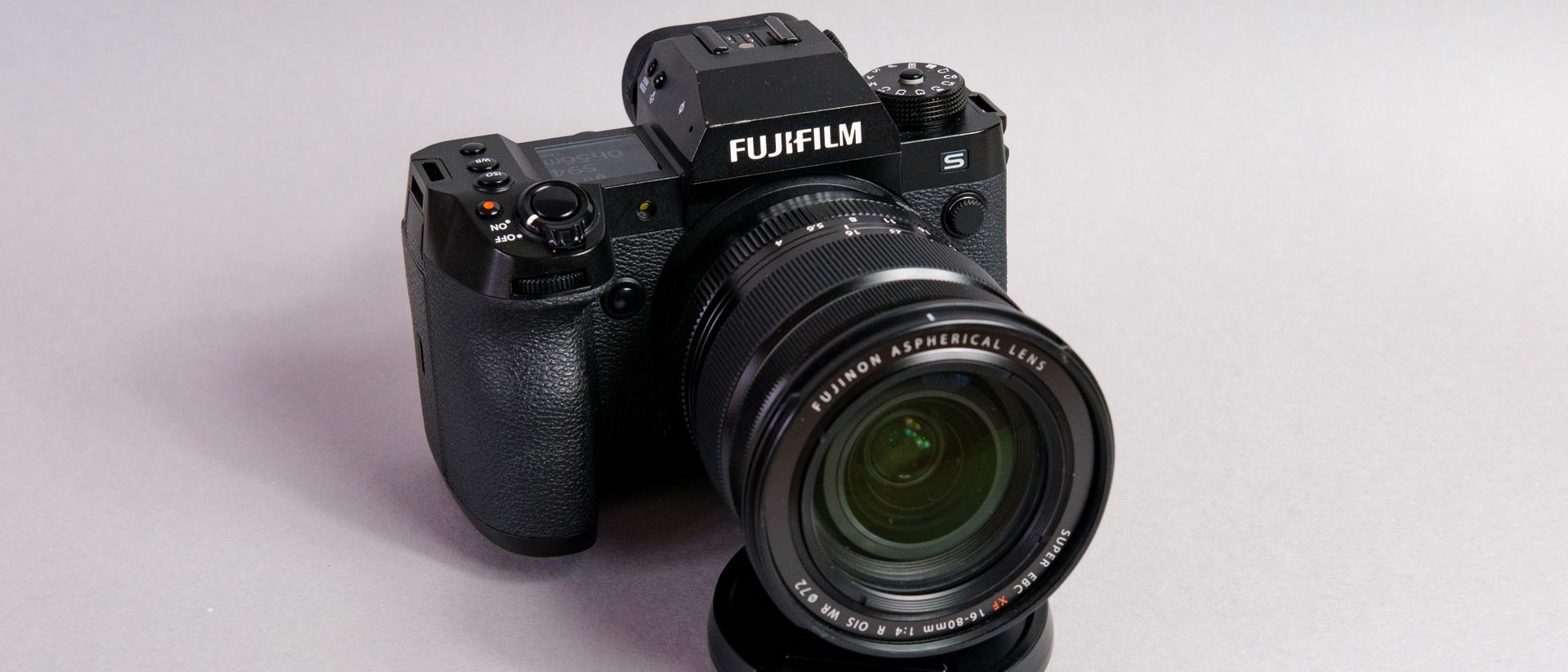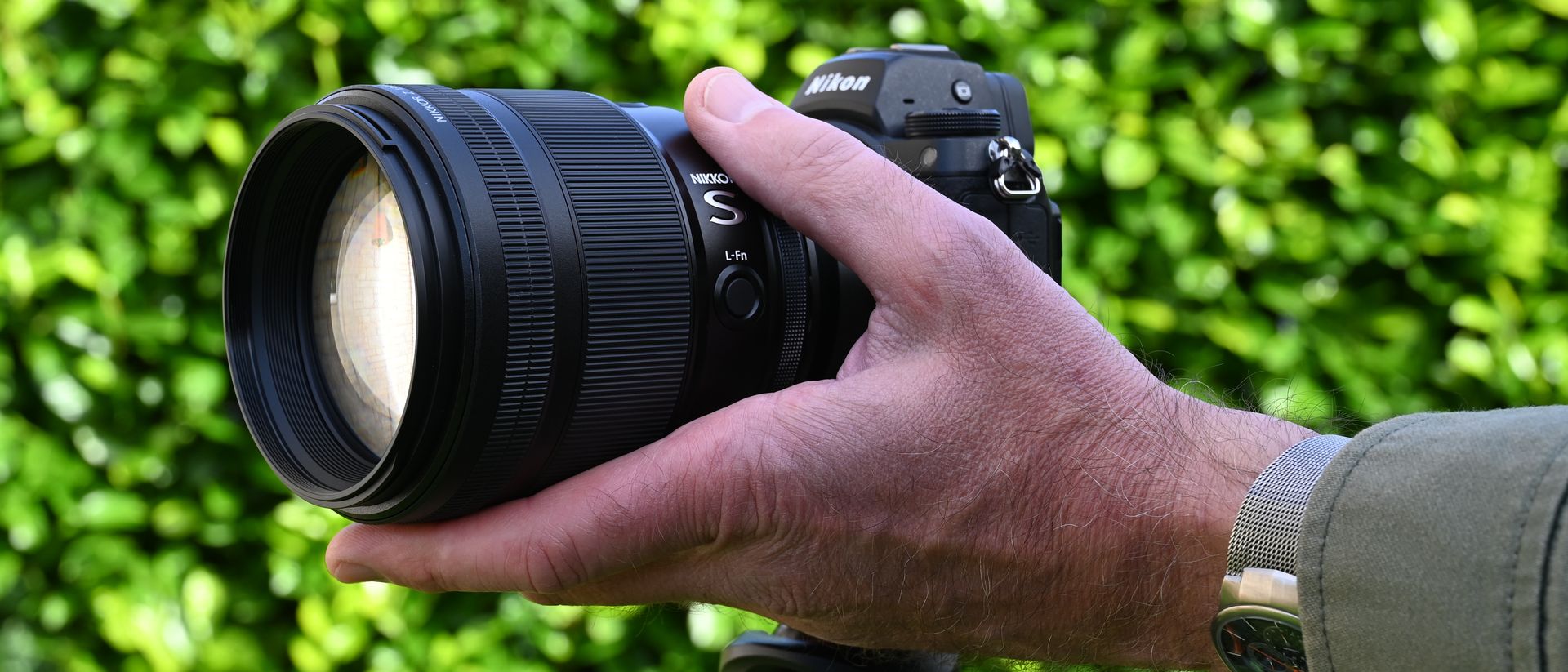Trade in Fujifilm X-T5

(Image credit: Future)
Fujifilm has long been a haven for photography traditionalists – and the Fujifilm X-T5 could be its greatest gift so far to that shrinking but still significant demographic.
In a world that’s increasingly turning towards video and full-frame sensors, the company has doubled down on its strengths (retro charm, tactile controls, compact bodies) to make a photo-centric camera that could well be the sweet spot in its entire X series, unless you like 8K video and fully-articulated screens.
The X-T series (with the ‘T’ standing for ‘traditional’) has always been most popular with keen amateur photographers, or pros who want a fun weekend ride that feels like a film camera. The Fujifilm X-T5 carries that same spirit, adopting the classic dials that are missing from Fujifilm’s more modern X-H series. But it also packs in an impressive amount of modern mirrorless tech, including the same 40.2MP APS-C sensor and X-Processor 5 that are in the Fujifilm X-H2.
We are Tradelectronics, licensed second-hand electronics dealer located in Sydney CBD, experts in trading used laptops, old cameras & lens, and used mobile phones. Fast, Reliable & We Pay More! Get a free quote on your favourite WhatsApp, Facebook, SMS & Email, instant reply!
| Click icon for WhatsApp Quote | Click icon for facebook Quote |
 |
 |
- We are open from Mon – Sat 12pm – 7pm
- Get your free quote from WhatsApp and Messenger are highly recommended, we can guide you through in finding the accurate specs for your laptops, cameras & lens, mobile phones as well. As such we can provide a more precise quote for you.
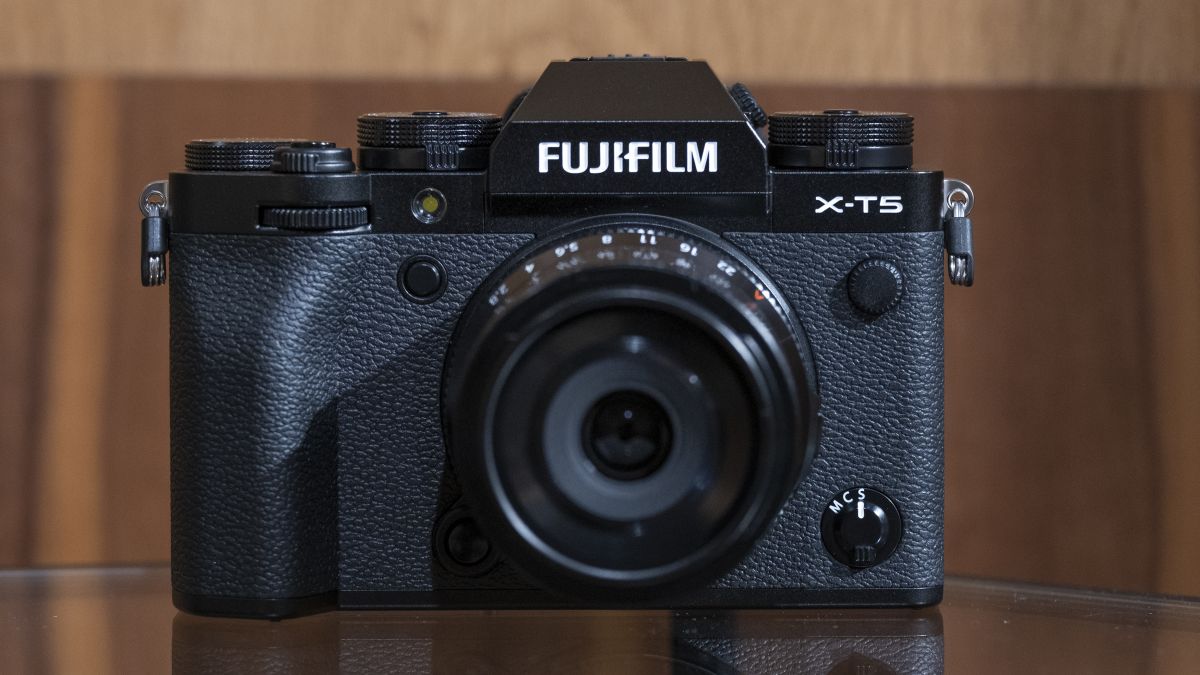
(Image credit: Future)
With Fujifilm’s new X-H flagships shouldering the burden of being hybrid beasts for both stills and video, the Fujifilm X-T5 has been freed to indulge fans of the series with a more purely photographic experience. On the back, there’s the three-way tilting screen from the Fujifilm X-T3. And inside, there’s a boosted in-body image stabilization system that promises to provide up to seven stops of compensation.
So, has Fujifilm delivered the perfect hobbyist camera in the X-T5? Or is it too stuck in the past for its own good? We spent a few hours with the X-T5 at Fujifilm’s House of Photography in London to find out…
Fujifilm X-T5 release date and price
The Fujifilm X-T5 is available to pre-order today in black or silver finishes ahead of its on-sale date of November 17. You can buy the camera body-only for $1,699 / £1,699 / AU$3,199, or in two different kit lens bundles.
The more affordable bundle includes the XF18-55mm, and costs $2,099 / £2,049 / AU$3,949. Alternatively, you can get the X-T5 with the more versatile XF16-80mm lens for $2,199 / £2,149 / AU$4,099.
Impressively, this pricing is (at least in the US) exactly the same as that for the Fujifilm X-T4, which launched in early 2020. And if you do live in the UK or Australia, the price bump certainly isn’t unreasonable, given current inflation.

(Image credit: Future)
How does the Fujifilm X-T5’s pricing compare to its closest rivals? The Canon EOS R7, which similarly has an APS-C sensor, is a little cheaper at $1,499 / £1,349 / AU$2,349 (body only). But that camera has an inferior selection of native lenses, a lower-res viewfinder, and its sensor is 32.5MP compared to the X-T5’s 40.2MP.
Perhaps a trickier decision for many photographers will be whether to go for the X-T5 or Fujifilm’s flagship X-H2 ($1,999 / £1,899 / AU$3,399, body-only). Both cameras share the same sensor and processor, with the X-H2 differing in its more DSLR-like controls, superior viewfinder, vari-angle screen, 8K video and CFexpress card slot (which extends the length of time you can shoot at 15fps for).
Fujifilm X-T5: design
- Slightly smaller and lighter than its predecessor
- Has traditional control dials, rather than PASM setup
- Same 3.69 million-dot EVF as the X-T4
The design of the Fujifilm X-T5 definitely marks it out as more of a hobbyist camera than a pro workhorse. If you like deep grips, then you’ll want to look elsewhere (at the X-H series, for example). But it also offers a perfectly-evolved control system that’s been refined in a few places.
The X-T5 is slightly smaller and lighter than its X-T4 predecessor, with over 5mm shaved off its width and about 50g from its weight (it’s 557g with a battery and memory card). It’s still as weather-resistant as the X-T4, but in terms of size it’s like a return to the X-T1 – and the throwbacks don’t end there.

(Image credit: Future)
For photographers, the X-T5 is like an X-T series greatest hits collection. You get the three-way tilt-screen and dual memory card slots of the X-T2 and X-T3, plus the same 3.69 million-dot EVF (with 0.8x magnification) as the X-T4. Inside, there’s also a boosted version of the latter camera’s in-body image stabilization system, which promises 7.5 stops of compensation.
It’s as if Fujifilm asked its hardcore fans to vote on the features it should include in the X-T5. The rear screen, for example, is a strangely divisive choice, with some traditionalists deriding the X-T4’s vari-angle display as being too video-centric. We think the three-way tilt-screen is better for photography, as you can shoot from high or low angles without flipping it out to the side, so we’re pleased to see it return on the X-T5.
Smaller touches show that the X-T5 is really closer to the X-T3 than to its immediate predecessor. Gone are the rubber flaps that covered the ports on the side of the X-T4, for example, with the X-T3’s removable doors instead offering a more convenient setup for those who like to attach L-brackets. There’s also a physical switch on the front for moving between the different focusing modes.
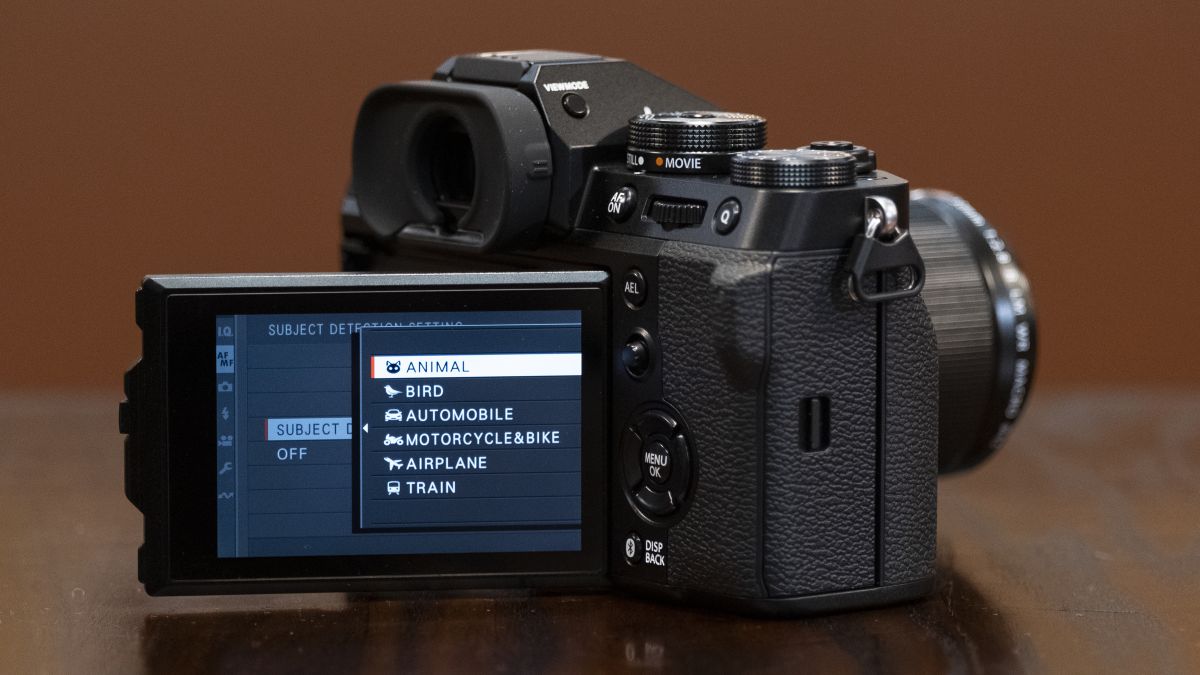
(Image credit: Future)
But the fundamentals of this camera are very much in the spirit of the whole X-T series. On the top plate, you have separate dials for ISO, shutter speed and exposure compensation. This is one of the big differences from the X-H series and most other modern mirrorless cameras. Whether your prefer this or more typical PASM setup is a matter of taste, but there’s no doubt that the X-T5’s setup works really nicely with the aperture rings found on most of Fujifilm’s X-mount lenses.
We’re pleased to see that the X-T5’s ‘on/off’ switch is now slightly more recessed, which means less chance of it being accidentally turned on in your camera bag. But it’s not all good news, particularly if you have video leanings. There’s a flimsier microHDMI port (rather than a full-size one found on the X-H series) and no headphone jack either, although it’s possible to use a USB-C adapter to monitor sound.
The most controversial omission on the X-T5, though, is that there’s no option to add a vertical battery grip. Some X-T4 fans find this to be a useful way to boost their camera’s stamina and handling during demanding shoots, but Fujifilm said they wanted to keep the X-T5 as small as possible.
Given the camera’s NP-W235 battery can now go for a claimed 580 shots between charges (or 740 frames in ‘Economy’ mode), we doubt this will be a huge miss for most prospective X-T5 buyers, but it’s worth bearing in mind if you like to go on epic shoots without access to power or spare batteries.
Fujifilm X-T5: features and performance
- Latest subject-tracking autofocus for animals and birds
- Still a max of 15fps continuous shooting (with limited buffer)
- In-body image stabilization offers seven stops of compensation
The X-T series has always been more about the photography experience than bleeding-edge technology, but the Fujifilm X-T5 certainly isn’t found wanting when it comes to features.
Its new X-Processor 5 delivers subject-detection AF that allows the X-T5 to recognize and track animals and birds. We haven’t tried this side-by-side with a Canon EOS R7, but it’s fair to say that in the past Fujifilm’s autofocus has lagged slightly behind its Canon and Sony rivals. The X-T5 does, though, have more phase-detection pixels than its predecessor, so we’re looking forward to giving this a more thorough real-world test.
When it comes to burst shooting, the X-T5 can still hit a maximum of 15fps when using the mechanical shutter or 20fps when using the electronic shutter. But the camera’s 40.2MP resolution (and the lack of a CFexpress card slot) does impact how long you can maintain these speeds.

(Image credit: Future)
For example, you can only shoot at 15fps for just over one second (or 19 frames) when shooting uncompressed raws, before the buffer fills up. It’s a similar story when you’re set up to take ‘raw + JPEG ‘ simultaneously. Granted, you can shoot for almost eight seconds when firing off just JPEGs at that speed, but this isn’t something most keen amateurs will want to do.
Unfortunately, even when you switch down to 10fps or 7fps, that limit for uncompressed raw shooting remains the same. For most people, 2-3 second bursts will be enough to snag a moment, but if you shoot a lot of action it’s worth bearing in mind that CFexpress-compatible cameras like the Fujifilm X-H2 can shoot 400 raw files at 15fps (enough for 26 seconds without pausing for breath).
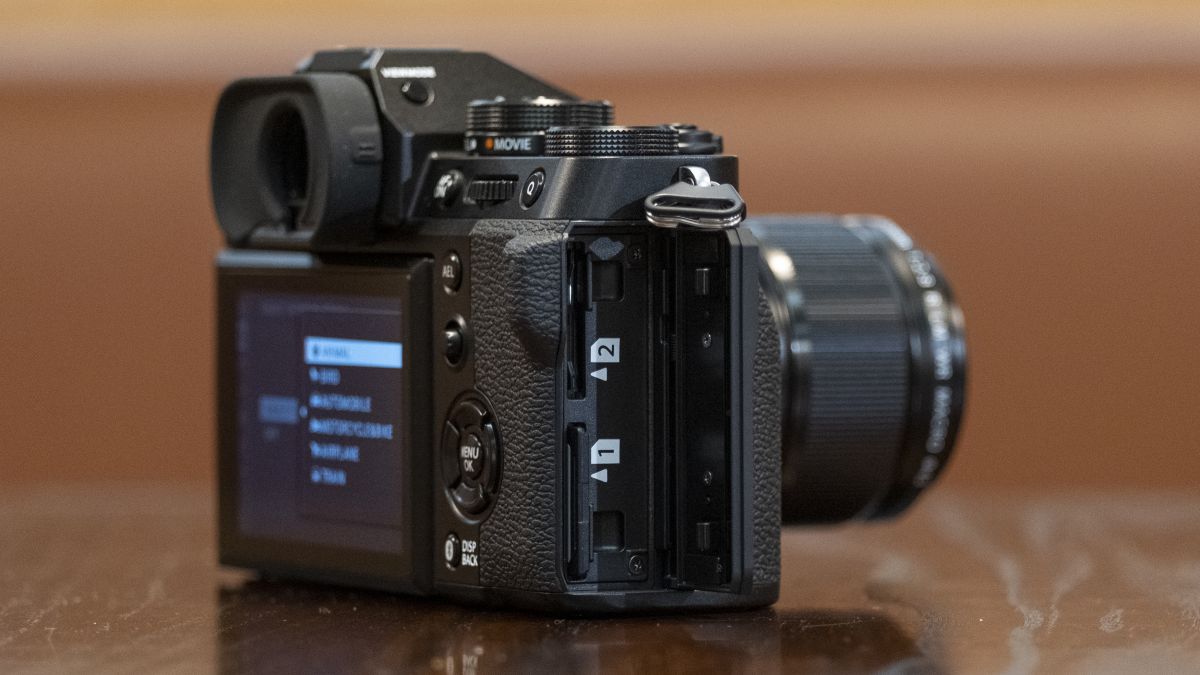
The inclusion of dual SD card slots keeps the X-T5’s body small, but also constrains its burst shooting compared to CFexpress cards. (Image credit: Future)
On the plus side for photographers, the X-T5 does have a speedy new maximum shutter speed of 1/180000 sec and includes the X-H2’s ‘Pixel Shift Multi-Shot’ mode for producing 160MP photos. Like similar modes from the likes of Sony, it does this by using its IBIS mechanism to shift the sensor around a pixel at a time, letting you take 20 frames with one shutter press. You then need to combine these frames afterwards using Fuji’s ‘Pixel Shift Combiner’ software (for Windows and Mac).
One of the traditional strengths of the X-series has been its out-of-camera JPEG performance and this is the case again with the X-T5. You get the full set of 19 Film Simulation modes, which ape the looks of classic film stocks, and it also supports HEIF format, which gives you 10-bit image quality with significantly smaller file sizes than standard JPEG.
Overall, then, the X-T5 isn’t a vast jump up from the X-T4, but its subject-tracking autofocus, in-body image stabilization and high-resolution stills will represent a more substantial leap from older X-T bodies.
Fujifilm X-T5: image and video quality
- Has the X-H2’s 40.2MP X-Trans CMOS 5 HR sensor
- Capable of shooting 6K/30p or 4K/60p video
- Native base ISO is now ISO 125
The Fujifilm X-T5’s 40.2MP X-Trans CMOS 5 HR sensor is now a known quantity, as it’s the same as the one we saw recently in the Fujifilm X-H2. A huge boost in resolution is the obvious benefit over the 26.1MP sensor from Fujifilm’s last generation of cameras, but it isn’t just about more pixels.
The sensor’s design apparently gathers light more efficiently than previous X-Trans chips, which is why the X-T5 has a native ISO 125 sensitivity (rather than ISO 160). Perhaps more importantly, image processing ensures that the 40.2MP resolution doesn’t come with much of a penalty in terms of noise or dynamic range when compared to lower-resolution APS-C sensors.
In other words, we’ve been quite happy to shoot up to ISO 6400 on the X-H2 and we anticipate this being the case on the X-T5. But we’ll reserve final judgement on stills quality for our final review, as we only had a some brief time shooting with the new XF30mm f/2.8 R LM WR Macro lens.

(Image credit: Future)
The X-T5 may be a photo-centric camera, but it’s more than good enough to shoot some accompanying video. You don’t get the headline 8K mode seen on the X-H2, but you can shoot oversampled 4K/30p video in 4:2:2 10-bit color.
Advanced filmmakers and color graders can also shoot in F-Log2, which boosts the camera’s dynamic range to around 13 stops. And if you have an Atomos monitor, you can also output 6.2K/30p raw video footage via the microHDMI port in the 12-bit Apple ProRes RAW format.
There’s no 4K/120p video mode sadly, but you can shoot 1080p/240p clips and the X-T5’s subject-detection AF works in video. We’ll need a little more time with the camera to fully test its video powers, though.
Fujifilm X-T5 early verdict
The Fujifilm X-T5 definitely has the makings of one of being one of the best cameras for photography. Its three-way tilting screen makes it slightly more photo-centric than the X-T4, while its retro dials deliver a traditional shooting experience that’s absent on the X-H2.
Most photographers will also appreciate the X-T5’s subject-tracking autofocus, in-body image stabilization and, of course, that 40.2MP resolution. Those extra megapixels don’t come completely without cost, though, with the X-T5’s buffer pretty limited if you want to shoot bursts of raw files.
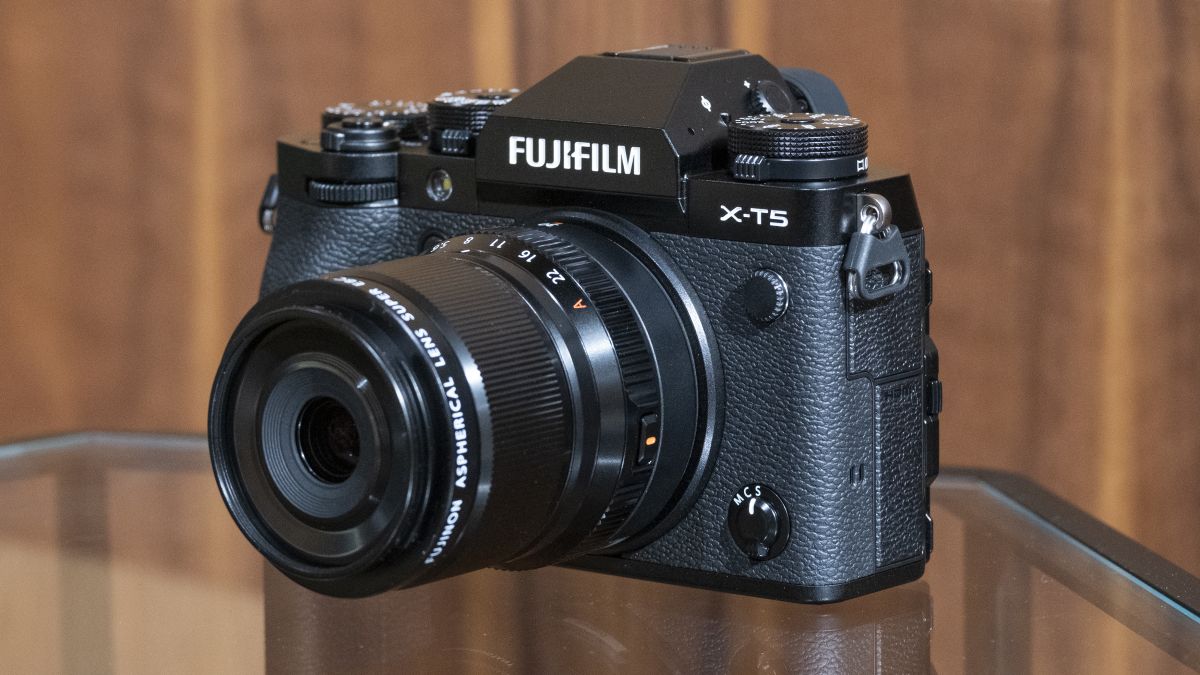
(Image credit: Future)
It’s certainly no sports or action camera, then, which is why the decision between the X-T5 and the more powerful X-H2, which takes CFexpress cards, could be a tricky one for some, particularly given that their price tags aren’t that far apart.
Still, if you’re an X-T series fan, or simply want a new mirrorless camera that really embraces the fun of taking photos, the Fujifilm X-T5 is otherwise shaping up to be a very exciting camera indeed. We’ll bring you our final verdict soon once we’ve got our hands back on one of Fujifilm’s in-demand samples.
Source: Techradar

